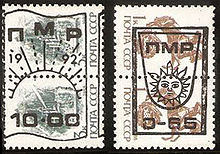
Philately is the study of postage stamps and postal history. It also refers to the collection and appreciation of stamps and other philatelic products. While closely associated with stamp collecting and the study of postage, it is possible to be a philatelist without owning any stamps. For instance, the stamps being studied may be very rare or reside only in museums.
This is a list of philatelic topics.

The Mexican postal system has its roots in the Aztec system of messengers which the Spanish adopted after the Conquest. A postal service was established in 1580, mainly to communicate between the viceroyalty of New Spain with the motherland Spain. During the 18th century, Spain established a formal postal system with regular routes. In 1856, Mexico issued its first adhesive postage stamps, with "district overprints", a unique feature among postal systems worldwide, employed to protect from theft of postage stamps.
This is a survey of the postage stamps and postal history of Transnistria, an unrecognized breakaway territory of Moldova and the de facto independent Pridnestrovian Moldavian Republic.

In general, philatelic fakes and forgeries are labels that look like postage stamps but have been produced to deceive or defraud. Learning to identify these can be a challenging branch of philately.
This article surveys the postage stamps and postal history of the Republic of South Moluccas. Historical or political incidents can be found in the main article.
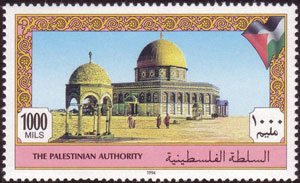
The Palestinian National Authority began in 1994 to issue stamps and operate postal services as authorized by the Oslo Accords.

The postal history of Turkey and its predecessor state, the Ottoman Empire, dates to the 18th century when foreign countries maintained courier services through their consular offices in the Empire. Although delayed in the development of its own postal service, in 1863 the Ottoman Empire became the second independent country in Asia to issue adhesive postage stamps, and in 1875, it became a founding member of the General Postal Union, soon to become the Universal Postal Union. The Ottoman Empire became the Republic of Turkey in 1923, and in the following years, its postal service became more modernized and efficient and its postage stamps expertly designed and manufactured.
Bangladesh first issued its own postage stamps upon gaining independence in 1971. A set of eight stamps, with various motifs including a map of the country, were issued. Shortly after, stamps in eight values were overprinted "Bangladesh Liberated" in both English and Bengali were prepared in the United Kingdom, but only three values were issued in Bangladesh.

The Tuvan People's Republic issued postage stamps between 1926 and 1936. They were popular with stamp collectors in the Western world in the mid-twentieth century because of the obscurity and exoticism of Tannu Tuva and the stamps' quirky, colorful designs. The validity of many stamps purportedly issued by Tannu Tuva has been questioned by philatelists.

The postage stamps and postal history of Azerbaijan describes the history of postage stamps and postal systems in Azerbaijan, which closely follows the political history of Azerbaijan, from its incorporation to the Russian Empire in 1806, to its briefly obtained independence in 1918, which it lost to the Soviet Union in 1920 and re-acquired in 1991 after the dissolution of the Soviet Union.

A specimen stamp is a postage stamp or postal stationery indicium sent to postmasters and postal administrations so that they are able to identify valid stamps and to avoid forgeries. The usual method of invalidating the stamps is either overprinting in ink or perforating the word Specimen across the stamp and where English is not the common language, the words Muestra (Spanish), Monster (Dutch), Muster (German) or Образец have been used instead.

Bahrain first used the postage stamps of British India before eventually issuing its own stamps in 1960.
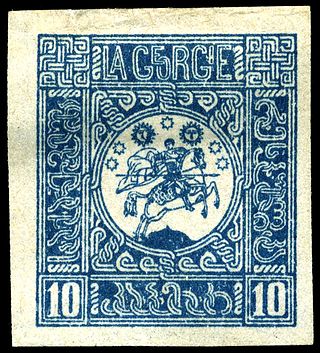
This is a survey of the postage stamps and postal history of Georgia.

This is a survey of the postage stamps and postal history of Ukraine.

This is a survey of the postage stamps and postal history of Ethiopia. Long an independent state in Africa, messages were originally carried by couriers called méléktegnas, who held the letters attached to a stick.

In philately a parcel stamp is a stamp specifically issued to pay the fee for the transport of a parcel through the postal system and usually marked as such. It is to be distinguished from a postage stamp used to pay the cost of posting a parcel, although there may no practical distinction as far as the sender is concerned. Parcel stamps issued by governments have the same status in philately as postage stamps, but parcel stamps issued by private railway companies or road carriers are regarded as cinderella stamps and many parcel stamps are also railway stamps.
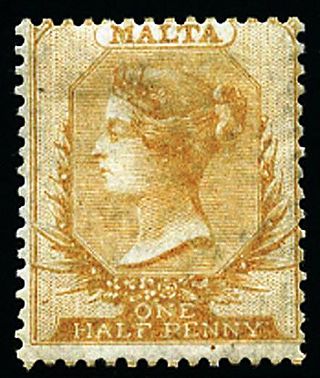
The Halfpenny Yellow is the first postage stamp issued by the Crown Colony of Malta. Depicting Queen Victoria, it was only valid for local postage and it was originally issued on 1 December 1860. It was the only stamp issued by Malta for two and a half decades, and during this period various reprints were made with differences in colour shade, perforation and watermark. When control of Malta's postal service was transferred to the island's colonial government on 1 January 1885, the stamp was withdrawn and it was replaced by a set of definitive stamps.

International trading tax stamp is kind of revenue stamps that were used in the Soviet Union in the 1920s and 1930s for taxation of the trade in stamps. The latter were considered a commodity for which philatelists could be taxed. This type of taxation was introduced by the Soviet government in addition to revenue it collected from stamp sales. International trading tax stamps were issued by the Posledgol Central Commission of VTsIK, the Organisation of the Commissioner for Philately and Scripophily and, later, by the Soviet Philatelic Association.
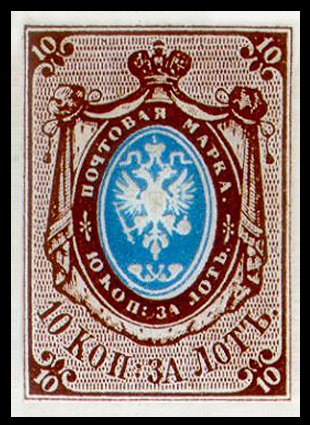
The first stamp of the Russian Empire was a postage stamp issued in 1857 and introduced within the territory of the Russian Empire in 1858. It was an imperforate 10-kopeck stamp depicting the coat of arms of Russia, and printed using typography in brown and blue.
